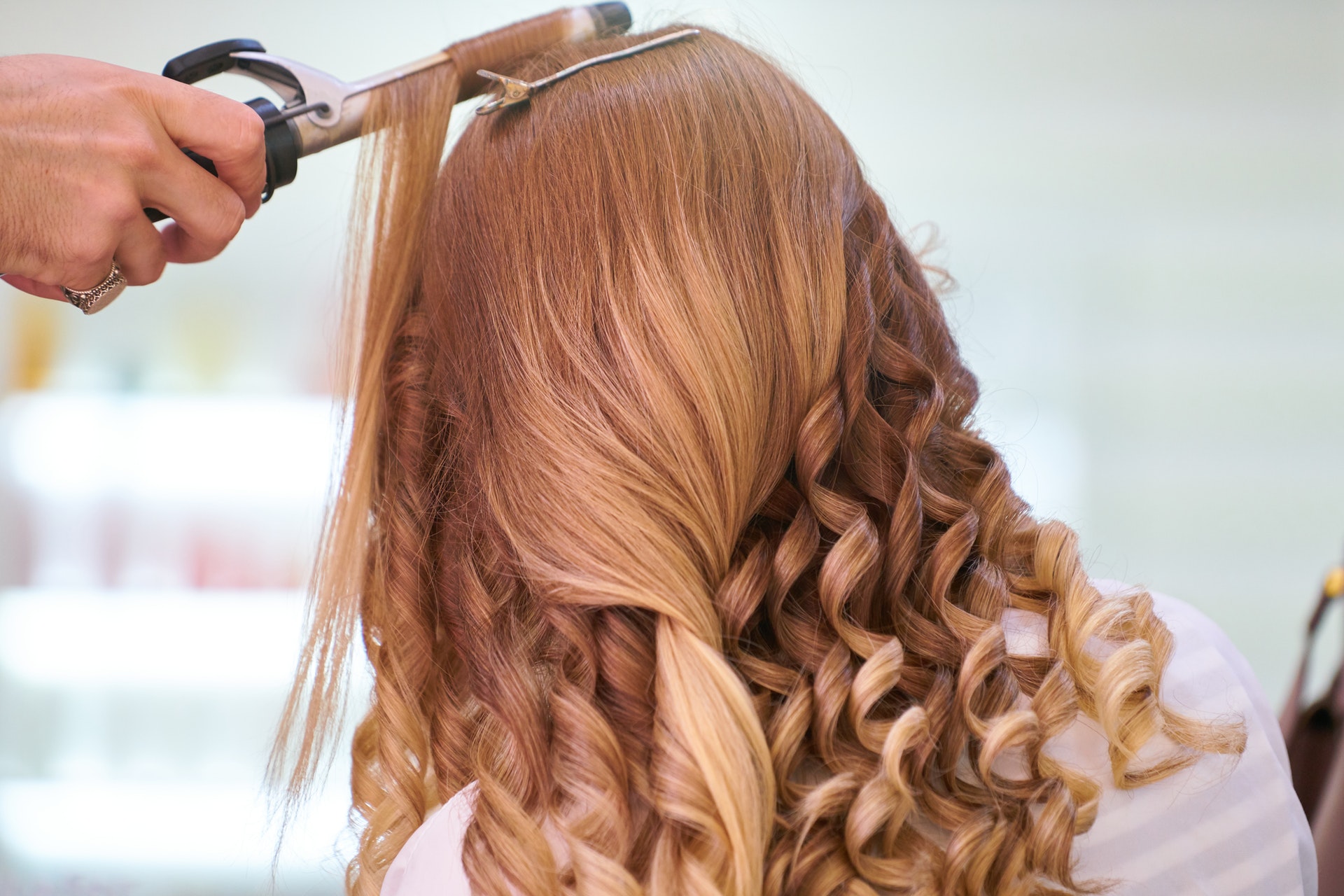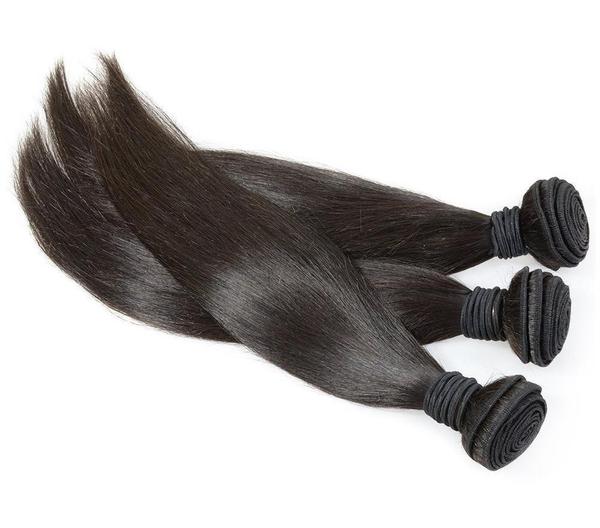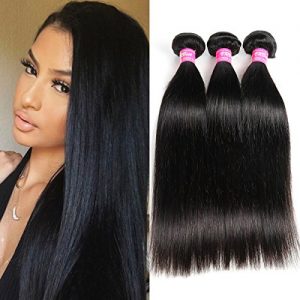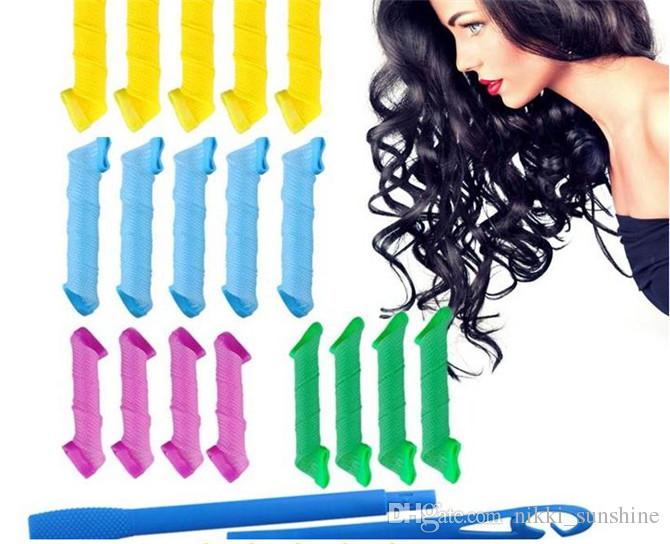If you live on God’s green earth, chances are you’ve come across weaves, extensions, and wigs before. However, chances also are that you can’t actually differentiate between the three, especially if you’re not pop-cultured. Anyway, there’s nothing wrong with being a newb in these things. That’s why we’re here with a hair extensions guide.
So, in quick fashion, let’s dive right in.
First, let’s define each of these terms as they do tend to get mixed up by hair newbs a lot.
Table of Contents
What are Hair Extensions?
As the name suggests, hair extensions refer to pieces of hair that the stylist adds to your hair through various methods to give an appearance of longer, sometimes fuller, hair. These methods include clipping, bonding, braiding, seamless applications, fusion, as well as weaving.
Usually, extensions can be of two forms. They can either be synthetic hair or they can be real human hair. Synthetic hair cannot be heat-styled as they are made of plastic fibers, not real hair. Hence, it can’t withstand heat.
So, you want to stay away from blow drying or using a flat iron on synthetic extensions. Human hair, on the other hand, can obviously withstand heat. You’ve used heat on your hair, no doubt, right?
In both cases, however, you can easily cut both kinds of hair into any style at all. But it might be better if you stick to using human hair for styles that involve layers or well-defined bangs.
What is a Weave?
A weave is different from hair extensions the way an orange is different from a fruit. All oranges are fruits but not all fruits are oranges.
Weaves are a kind of hair extension that you install onto your hair by sewing in. If you’ve had weaves on before, your stylist must have made your natural hair into cornrows (some people also call it tracks). Then your stylist would then have sewed in the sealed part of the extension into these cornrows using a needle and a thread to secure them onto your hair.
Another way to install weaves is to make them into custom wigs of different volumes, textures, and colors.
Hence, the primary difference between hair extensions and weaves is that hair extensions refer to any piece of hair added to the natural hair using any method to give the hair a fuller and longer appearance.
Weaves, on the other hand, refer to hair extensions added to the hair specifically by sewing onto braided hair or hair extensions used to make custom wigs. This brings us to our next point.
What is a Wig?
It somewhat feels like we shouldn’t define wigs, right? Everyone knows that wigs are made by installing hair extensions onto a wig cap rather than directly onto a person’s head. But there’s a little more about wigs that you should know.
For one, not all wigs are full wigs, there is such a thing as a partial or U-part wig. This type of wig typically covers only half of your head leaving the other half of your natural hair out for styling. It’s the method most people go for when they simply want to add a bit of length or volume to their hair.
Wigs are every woman’s favorite, and why not? They are super convenient and with just the right number in your closet, you can still slay while letting your natural hair get the needed time to rest and thrive.
Plus, though they can be a little bit costly upfront, they more than make up for their initial cost considering how long they last. Just remember that wigs fit best when the stylist customizes them to fit the shape of your head.
Because wigs are made of hair extensions, they can also either be made of synthetic hair or human hair. Of course, human hair is a much better choice for making wigs because they are more attractive and also more versatile.
There Are Two Types of Wigs, By the Way
Since we are here, we should probably mention that human hair wigs are of two types which are the lace front wigs and the center skin part wigs.
Of these two, the more superior one is the lace front wig because it gives the illusion of a hairline and so the wig looks more realistic because of how well-blended it ends up looking. A center skin part, on the other hand, is great for bangs and makes it look like your natural hair is growing at the location of the part.
Because this hair extensions guide is just an introductory article, we won’t be going into all the detail on what lace front wigs and center part wigs are. We will rather create other posts where we discuss these wigs exhaustively. Please, check them out. They contain lots of useful information that will help you.
We have successfully concluded the first part of this discussion and that is differentiating between extensions, weaves, and wigs.
As you have now come to see, the umbrella name for them all is “extensions.” However, it’s more common to see the word “weaves” thrown around in hair circles as they are the more common type of extensions used. This is because they are made to last for longer and allow you change your hair color, texture, and style more easily.
Virgin Hair, Remi Hair, and Non-Remi Hair
This is another set of terms that could throw you off balance if you are not fluent in hairspeak. But they are quite easy to differentiate, and once you know the basic difference, telling them apart becomes easy.
Virgin Hair
This the most expensive type of hair you can get because the cuticles of the hair are undamaged. The roots and tips also go in the same direction and the hair has not seen any kind of chemical whatsoever.
It’s like the Madonna of the group and comes from a single donor. It’s very expensive and rare. Plus, it is also the longest-lasting of all the hair types.
Remy Hair
Remi hair is the same as virgin hair at the basic level in that it has all the cuticles undamaged (at least 90% undamaged) and the roots and tips are also going in the same direction. However, Remi has some chemicals in it which could have come from perming or coloring. Also, Remi hair usually comes from various donors.
Non-Remy Hair
This is the least expensive of all the hair types, and for obvious reasons. All the basic guarantees you get from the two other hair types, not one is granted here. For non-Remy hair, the cuticles are damaged, the tips and roots travel in different directions (so it mattes and tangles quicker), and the hair is also usually heavily processed to make up for the two aforementioned factors.
However, many still go for this because it is quite affordable even though it hardly ever lasts long. With non-Remy hair, you’ve got 6 months with the hair max, while Remy hair can go up to 10 months with virgin hair lasting up to 2 years if well taken care of.
Of course, this is just an overview of the different hair types and we realize that you might have more questions. Our glossary on hair weaves and extensions should be able to help with that. Click here to check it out.
The Different Hair Textures
You’ve definitely heard of Brazillian hair, Indian hair, Peruvian hair, Mongolian hair, Eurasian hair, and their less popular cousins like Vietnamese hair, Cambodian hair, and the likes. These are just different names for different hair textures.
Now, don’t get lost in the names. They might have different country names, but most hair you see is made in China, regardless of the name on the package.
Single Drawn vs Double Drawn
These are the terms used to measure the density of hair.
When you say single-drawn hair, you’re referring to hair that comprises 50% of the specified length of hair and the other 50% of varied lengths of hair.
For example, say the hair you’re getting is 16 inches. If it’s single drawn, then only 50% of the hair would be 16 inches, the other half would be a mixture of different lengths of hair usually between 12 and 14 inches. Double-drawn hair, on the other hand, would have 70 to 80% of the hair at the specified length.
Single-drawn hair usually looks more like natural hair since individual hair strands usually have different growth rates.
However, if you are going for volume then double-drawn weaves might be your best bet except you have thin hair. If your hair is thin, the weight and volume of double-drawn hair could damage your hair. Go for single-drawn hair instead.
Why You Should Get a Weave
1. With weaves, you get variety in texture, style, length, and color. It’s an easy way to change your looks often and keep your style interesting, except you can grow Brazillian or Peruvian hair from your scalp on demand.
2. Weaves are also a quick way to achieve any look. You don’t have to wait months or years for your hair to grow to the desired length or achieve the desired texture.
3. When you get high-quality hair, it’s very possible to have your weave on for a couple of months at a time.
4. You get to give your hair some time to rest from the constant manipulation and heat damage it would have, otherwise, suffered without the weave. But you know what makes weaves more beneficial? You don’t have to sacrifice your good looks.
But There are Some Downsides too, Sorry…
1. If you’re not making your weaves into a wig, weaves do tend to pull on your scalp. This could cause you pain (depending on how tough your scalp is) or even damage your hair.
2. If you get weaves too often and neglect your natural hair, your hair can start to fall out and even possibly lead to premature balding.
Good News: The Downsides Can be Avoided
Now, the good thing about these downsides is that they are easily avoided following commonsensical rules.
For one, too much of anything is not good. So, use weaves and extensions in moderation. A good idea is to make some of your weaves into wigs.
Also, don’t neglect your hair whether you’re using weaves or using wigs. You can check out our article on how to take care of your natural hair underneath weaves and wigs if you need some helpful tips.
You Should Care for Your Weaves and Extensions
It absolutely makes no sense to spend all that money on quality weaves and extensions only to not take care of them, right? Well, here are surefire tips to ensure that your weaves always look lit.
1. Wash your weave with sulfate-free shampoo and use a moisturizing conditioner as well. Do this every two weeks, at least, so that your weave always looks clean and doesn’t tangle.
2. When washing your hair, do not wash in circular motions. Wash in a single direction: from root to tips, to prevent tangling.
3. Make sure you always dry your weave completely.
4. Avoid pulling on your weave too hard. Always comb gently.
5. It’s what we tend to do but we must avoid it — overusing styling products. When you use excess products on your hair, it could cause a product buildup and lead to dryness which could lead to tangling. Just use a little serum on the hair to restore your hair’s silky look.
6. When going to bed, cover your hair using a thin, silk scarf to keep the tangle and frizz away.
7. Always braid your hair at night before you go to bed.
8. When detangling your hair, always use a wide-toothed comb. Begin with the tips of the hair and then gradually work your way up until the hair is completely detangled.
Congrats! You’re No Longer a Hair Novice!
The aim of this hair extensions guide was to sort out the biggest confusions concerning weaves, extensions, and wigs as a way of introducing the beginner to the world of hairs. We believe we’ve done a good job of that.
If there’s anything you missed or you still have questions, our glossary on all weave-related words should help. Click here to read it. If you want, you can also ask your questions in the comment section and we’d be sure to attend to it, pronto. Cheers!




Send me ur WhatsApp number please
And IG handle
Please, send an email to hello@hairsdomain.com and we will provide you with all the information you need.
Interested
What are you interested in?